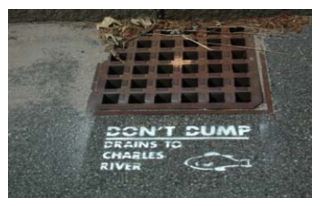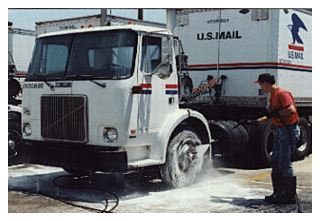Stormwater is water from rain or melted snow that drains into streets, culverts, ditches, and other man-made drainage systems known as “storm sewers.” Sanitary sewers are much different. They transport human and industrial wastewater to a treatment plant before discharging it into streams, lakes, or other bodies of water.
Stormwater from storm sewers does not usually receive any treatment before it enters surface waters, which makes stormwater a leading cause of water pollution.

Streets, parking lots, and building rooftops collect stormwater pollutants like oil, pesticides, sediments, and other chemicals, and deposit them into surface waters. This pollution kills aquatic life and makes our waterways an unhealthy place to work or play. Stormwater pollution can also contaminate our drinking water and lead to a ban on swimming, fishing, or boating.

The U.S. Postal Service® wants be a good neighbor and protect our surface waters for everyone to use and enjoy. We established policies to reduce USPS® pollution in stormwater run-off:
n Don’t allow vehicle wash water or other equipment wastewater to enter storm drains on USPS property. USPS requires suppliers who wash vehicles on postal property to use either a dry wipe process or collect and contain wash water for proper management off-site.
n Provide cover for outside storage of oil, chemicals, batteries, tires, salt storage piles, and trash. Keep storage containers and dumpsters closed and in good condition.
n Promptly clean up any spills and keep parking lots, dock areas, and stormwater drains free of debris.
We created these policies to protect our nation’s water supply and we require your support to ensure they are fully implemented. For more information, go to blue.usps.gov/cpim/ftp/policy/cso/cso06162016.pdf.
— Environmental Compliance and Risk Management,
Office of Sustainability, 4-13-17
